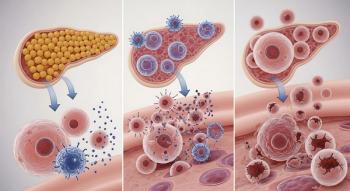
Anti-VEGF Treatment Preserves Sight Needed for Reading, Driving
Study shows 12% retained sight for driving and 15% for reading.
The current treatment options for late-stage neovascular form of age-related macular degeneration (nAMD), which is single largest cause of irreversible severe vision loss in high-income countries, are based on the inhibition of vascular endothelial growth factor (anti-VEGF).
Because anti-VEGF treatment controls the condition rather than cures it, treatment is long
term, often required until either the eye worsens to levels where treatment is no longer considered beneficial or the patient dies, wrote a research team led by
However, it’s not fully understood whether — and for how long patients — retain useful visual acuity after anti-VEGF treatment, commented Finger and his colleagues, who are researchers from Germany, Australia and Switzerland wrote. Several studies have shown a reduction in blindness from anti-VEGF treatment, they noted but “no study to our knowledge has assessed whether patients retain useful vision instead of avoiding legal blindness.”
“Considering the considerable societal effects of both nAMD and its treatment in terms of costs, a better understanding of lifetime outcomes of anti-VEGF treatment for nAMD is required,” they commented.
So they conducted a retrospective analysis of an observational study of nearly 3,200 patients who had anti-VEGF therapy for nAMD in eye clinics in Australia, New Zealand and Switzerland. All of the patients were age 55 or older and a majority (54%) were 80 or older. They were treated with an average of 17 injections, and 39% had both eyes treated.
The results showed that over an average of 11 years, about 12% of the people retained enough sight — visual acuity — for driving and about 15% retained enough sight to read in at least one eye. Being younger when the treatment started and getting more injections in the first year of treatment was associated with better outcomes, Finger and the research team concluded
Anti-VEGF treatment was associated with preserved useful sight in almost 20% to patients over their average remaining lifetime, according to the they researchers wrote. “This is a remarkable outcome compared with outcomes without intervention, which lead to legal blindness within three years of disease onset in 80% of those affected,” the researchers wrote. “These findings underline the public health necessity of providing anti-VEGF treatment to persons in need.”
A large proportion of patients being treated with anti-VEGF injections stop getting the treatments; Finger and his colleagues cite a “treatment cessation” figure of 50%
More work can be done to understand how to increase the proportion of those maintaining good VA over their remaining life span, “so that more people are able to age well,” the researchers added.
Finger and several of his co-authors reported receiving fees from companies who market anti-VEGF products.
Newsletter
Get the latest industry news, event updates, and more from Managed healthcare Executive.

















































